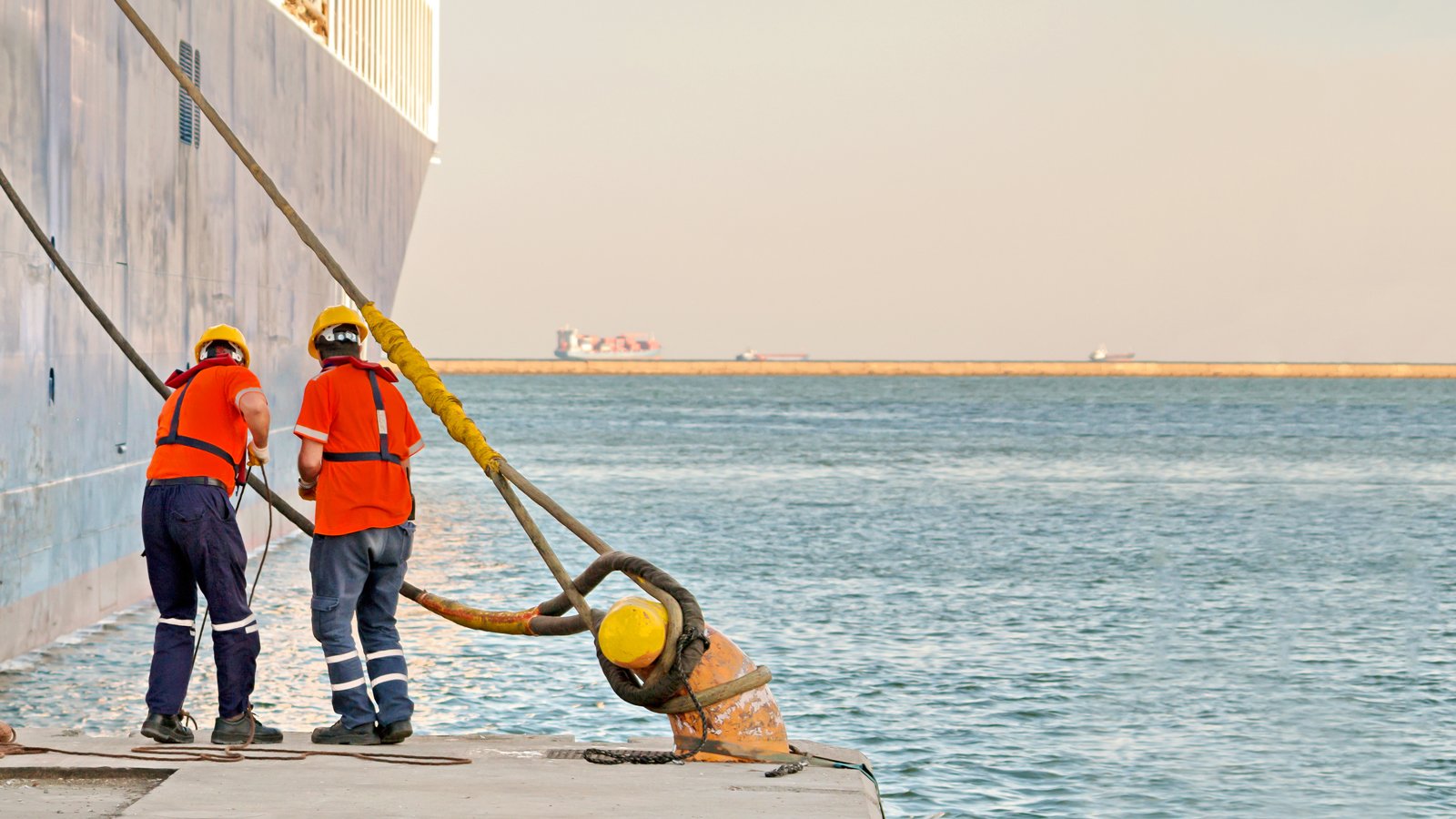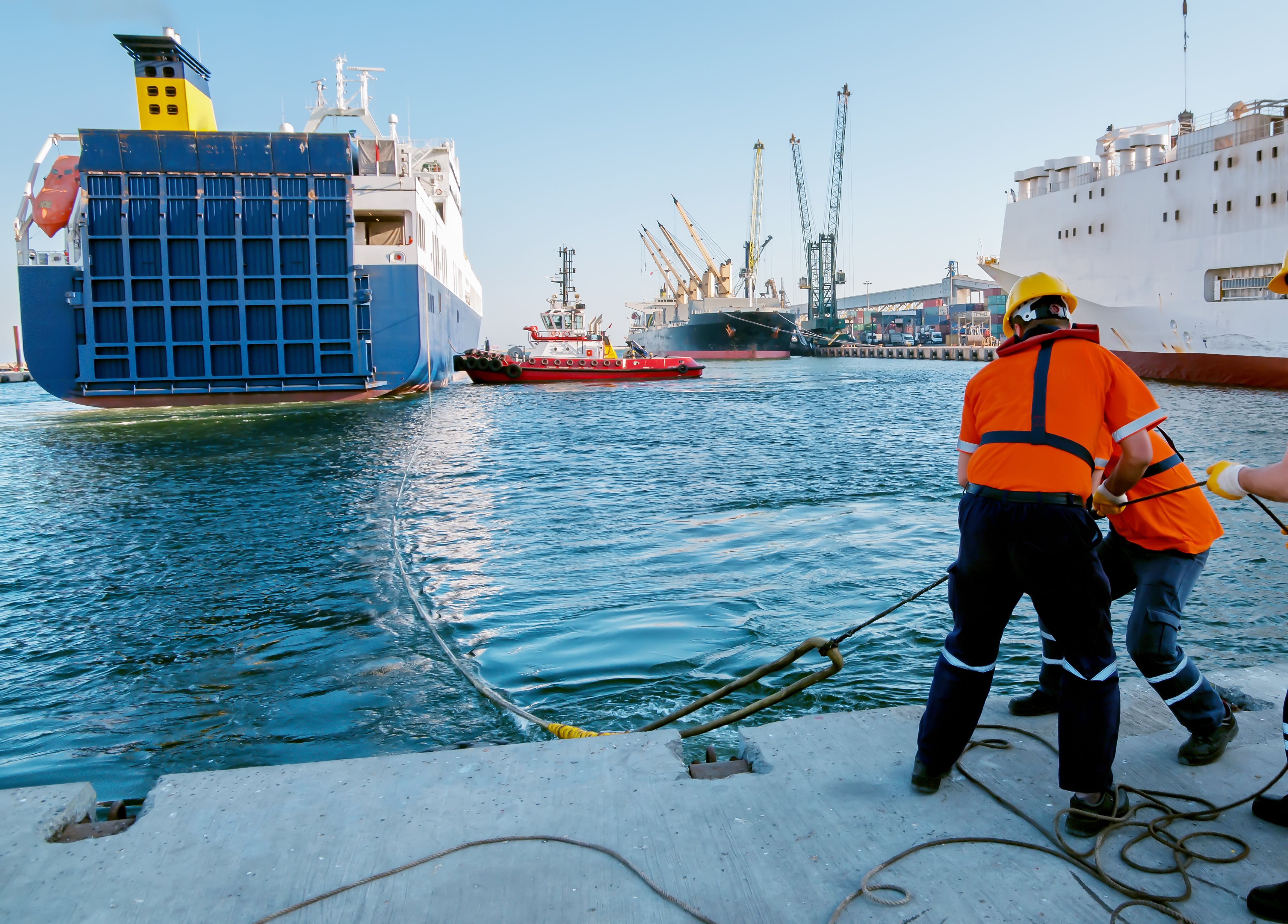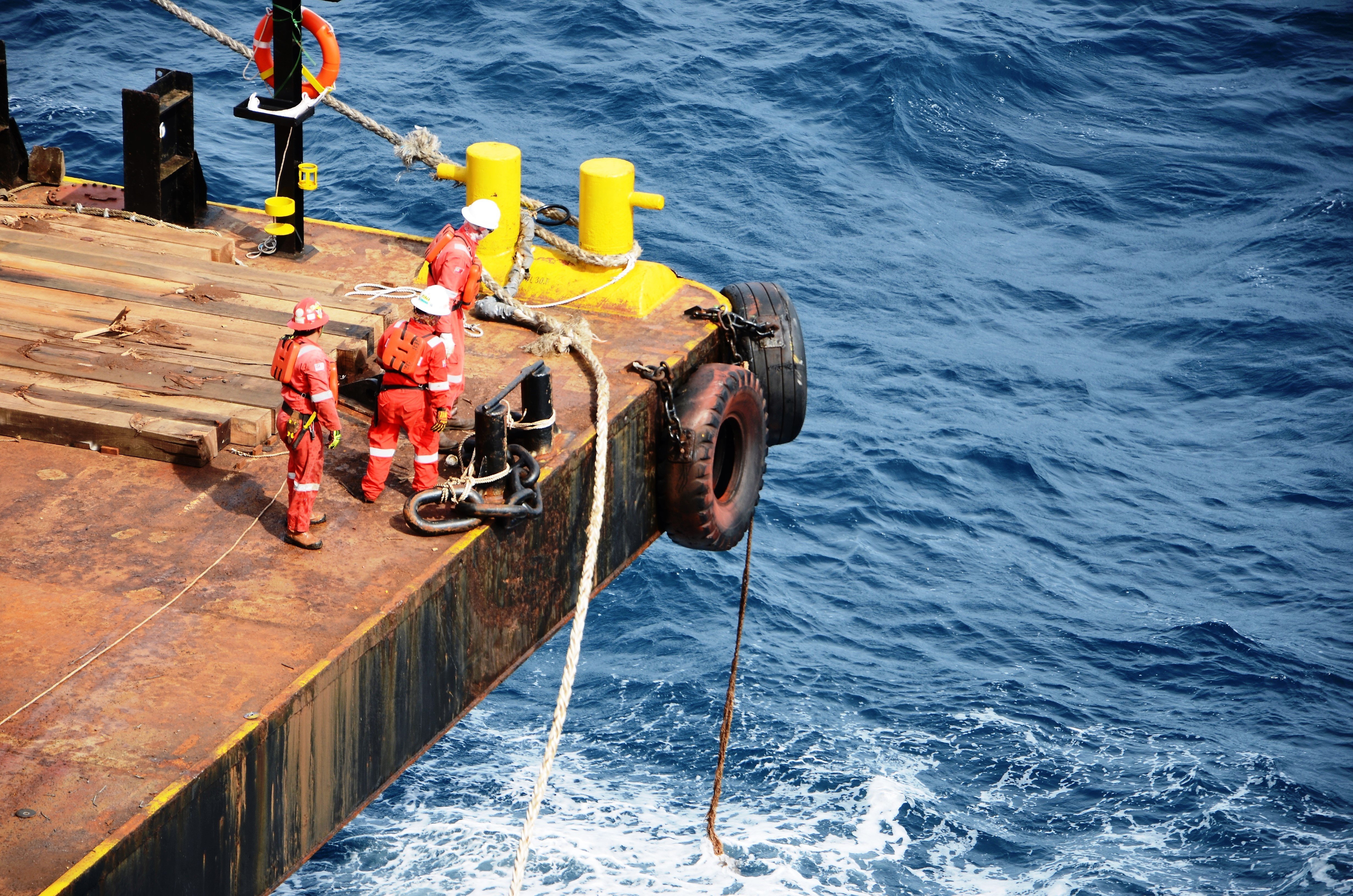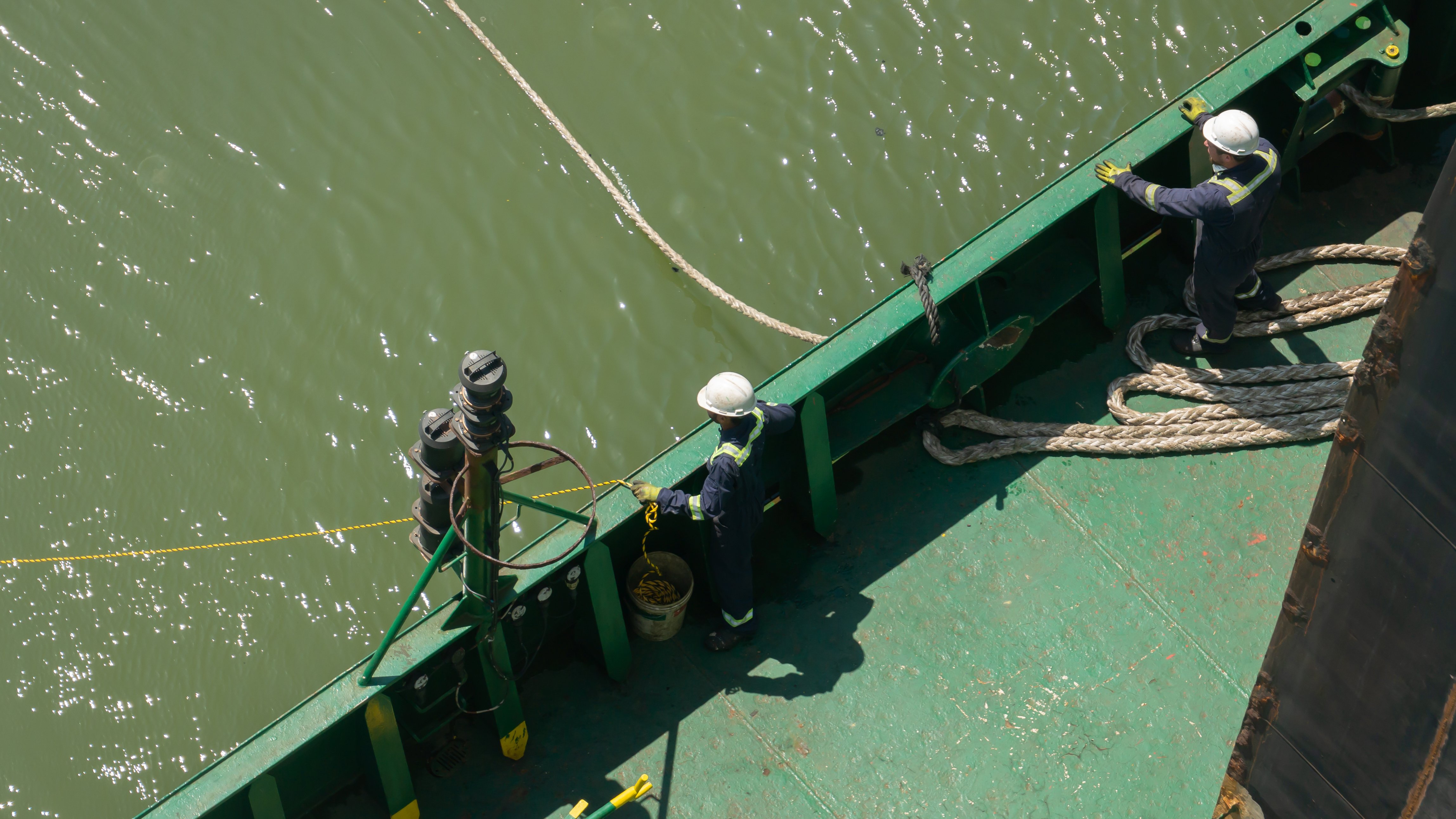Mitigating Mooring Crew Training and Knowledge Gaps

威尔森观察
|
Mark Oliver Wittburg, Head of Product Management and R&D for Mooring Solutions

How do you ensure safe Mooring?
Mooring operations are inherently risky, posing significant challenges to maritime crews daily. Between 2016 and 2021 the International Group of P&I Clubs recorded 858 injuries and 31 fatalities during mooring; equipment failure featured in only ≈ 5 % of cases—the rest were down to human practice (Ref.: gard.no).
This document aims to explore the importance of crew competence and industry standards in preventing ropes misuse, highlighting best practices, common mistakes, and the role of continuous training in maintaining high standards of safety and performance.
Wilhelmsen Ships Service provides you the cover you need to develop crew competence with the help of a solid knowledge base, expert guidance, compliant mooring solutions and a digital Line Management Plan (LMP). These resources help close operational knowledge gaps, improve compliance and enable safer and more cost-effective rope management. Furthermore, Wilhelmsen Experts can support you all the way in implementing best practices across you fleets, boosting safety and optimizing rope use and costs.

Understanding the risks in mooring operations
|
Year / vessel |
What went wrong |
Outcome |
Key training lapse |
|
Bulk carrier Mona Manx (Aug 2021; MAIB report 18/2024) |
Spring line recoiled while berthing Puerto Ventanas |
One fatality |
Inadequate Risk Assessment & Briefing; Non-compliance with Safety Protocols and Regulatory Guidelines; Lack of snap-back hazard awareness Ref.: gov.uk |
|
Anchor-handling vessel (May 2023, North Sea) |
Fibre line parted during mobilization (Snap Back) |
Two contractors hospitalised |
Inadequate Assessment of mooring line condition; Suboptimal mooring arrangement; Lack of snap-back hazard awareness Ref.: marinesafetyforum.org |
|
ULCV alongside Europe (Feb 2025; IMCA Safety Flash 02/25) |
Rope failed at 50 kts wind (Snap Back) |
One deck officer fatality |
Watch lacked training to recognize overload pattern; insufficient awareness and mitigation of snap-back hazards Ref.: imca-int.com |
|
Ro-Ro ferry (Oct 2023; UK MAIB lesson) |
Fingers crushed freeing overtight line |
Lost-time injury |
Crew skipped slack-first procedure, never formally taught Ref.: Safety Digest |
|
Ro-Ro vessel (2021; BHV) |
Allision with pier due to rope brakeage |
Off hire and damages |
Poor condition of mooring lines not being retired in time, break rendering setting Ref.: BSU-Bund.de |
The risk associated with routine berthing includes the potential for serious accidents each time a vessel makes a port call. When a mooring line is under inadequate tension, there is a possibility of injury if it snaps. Least, a mooring line failure can disrupt operations, but at worst, may result in accidents leading to injury or fatality.
Insufficient training or lack of confidence among crew members can increase the likelihood of incidents during mooring operations. Comprehensive training is important not only for effective mooring but also for improving safety for all personnel onboard and at the port. Accidents may impact crew families, affect industry reputation, make it difficult to recruit and retain skilled crew, and lead to higher insurance premiums.
Providing thorough education, training, and clear procedures in mooring practices supports safe operations. Well-trained crews are more likely to work safely, understand snap-back zones, and contribute positively to overall onboard safety.

Why knowledge gaps persist?
- Legacy curricula: Mooring line training is not included in basic STCW certification and should be provided based on the seafarer’s job role and the employer’s safety policies.
- Briefing fatigue: Mooring procedures and safety precautions are covered during onboarding by offsigning crew, though their focus may be divided. Pre- and post-port briefings are rare due to tight sailing schedules and overtime pressures, which may lead junior crew to rely on 'tribal' methods.
- Paper logs get lost, Insufficient documentation: Logs, certificates and inspections are scattered and easily lost among other administrative paperwork. Work instructions for upcoming tasks may be included in handovers but cannot be effectively tracked, leading to a loss of critical knowledge.
- Lack of training: Crews are rarely receiving necessary information on regulatory changes, manufacturer guidelines for proper rope handling, chafe protection, correct line inspection, and damage prevention, leading to false assumptions and potential safety hazards.

The Right Approach to Safer Mooring: Step by Step
Knowledge Base - Wilhelmsen Ships Service
An extensive library dedicated to the dos and don’ts of mooring operations, providing clear guidelines and detailed instructions for the maintenance, care, installation, and retirement of mooring lines and tails. This knowledge base ensures that crews and operators stay informed about evolving industry compliance requirements, regulatory changes, and best practices for safe and compliant mooring operations. Learn more!
Expert Advisory and Customer Support
The customer support team, along with highly skilled colleagues, provides expert technical advice and practical solutions. The Port Service Engineer network is available for rope inspections and installation supervision. In addition, residual break strength testing and splicing services are offered as on-demand services.
Digital Line Management Plan (LMP)
A comprehensive digital solution designed to facilitate the logging of mooring hours, inspection records, break rendering tests, certificates and the overall inventory of mooring lines for both onboard and onshore. Optimizing compliance and maintenance documentation, this system offers continuous visibility into the condition of each mooring line. By leveraging collected data, it enhances safety by ensuring lines are retired when needed, minimizing risk and enabling proactive life-cycle management. Learn more!
Snap Back Arrestor (SBA™)
A class-proven safety technology designed to reduce the risk of injury or fatality during mooring operations. It prevents the dangerous recoil of mooring lines in the event of a snap-back, absorbing energy and protecting crew members and equipment. The SBA™ enhances operational safety by providing an additional layer of protection. Learn more!
It is time for a safer way
Most mooring incidents are caused by human error, operational practices, and underscoring the importance of building operational capabilities. Key elements include accessible knowledge, expert advisory and digital tools.
Wilhelmsen’s integrated solution features a Knowledge Base regularly updated with clear guidelines, best practices and compliance requirements for mooring operations. Coupled with Expert Advisory Services and on-site training, this ensures crews are equipped with the latest technical insights and hands-on experience. Additionally, the Line Management Plan (LMP) provides enhanced traceability and compliance, streamlining the management of mooring lines and its conditions.
Furthermore, SBA™ Snap Back Arrestors add a vital layer of safety during operations, protecting crew members and equipment from the risks associated with line recoil. Together, these elements form a comprehensive approach that minimizes risks, ensures regulatory compliance, and optimizes operational safety.
Our mooring expert is here to help you

Mark Oliver Wittburg, Head of Product Management and R&D for Mooring Solutions at Wilhelmsen. Having transitioned from a seafaring career, he brings insights gained from years of hands-on experience navigating maritime challenges. In the early stages of his career, Mark sailed as a deck officer, gaining firsthand knowledge of operational challenges and safety concerns, particularly related to rope handling and mooring operations.
Drawing from this background, he works closely with a highly skilled team of professionals to create innovative products that address the evolving needs of the maritime industry. Together, they focus on delivering solutions that enhance safety, improve rope lifecycle management, reduce operational costs and support the long-term sustainability of maritime operations.
Get in touch with our experts
Other relevant articles:
- An overview of the regulations and guidelines governing mooring lines
- Why improper mooring tail selection compromises safety
- The hidden costs of rope chafing and how to avoid them
- Why using unverified anti snap-back solutions can be a serious threat to safety in mooring operations
- Digital rope management with all-in-one LMP application
- Navigating through new mooring guidelines